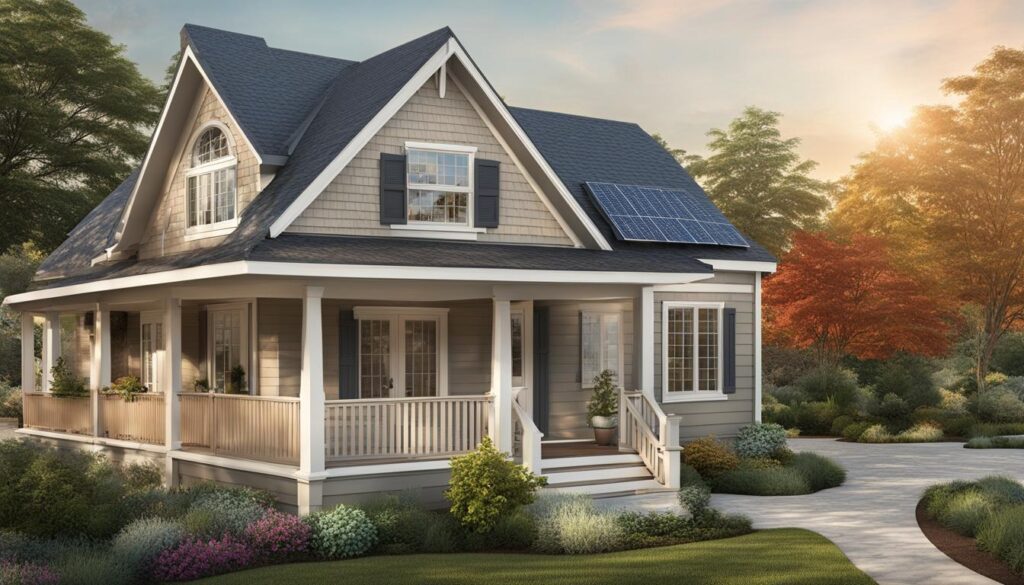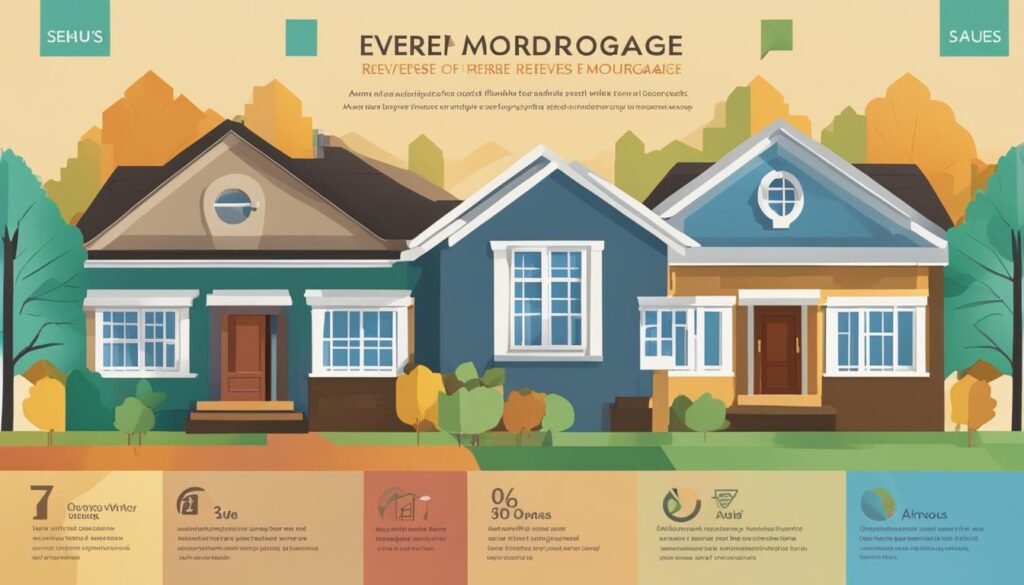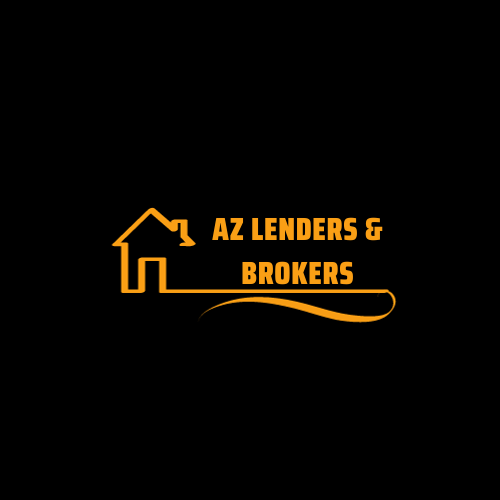Welcome to our quick and simple guide to understanding reverse mortgages. If you’re a homeowner aged 62 or older, reverse mortgages can offer you the opportunity to tap into your home equity without making monthly mortgage payments. Whether you’re looking for extra cash, a way to supplement your retirement income, or to reduce financial risk, reverse mortgages may be a viable option for you.
Before delving into the details of reverse mortgages, let’s break down some key terms you’ll encounter throughout this guide:
- Reverse mortgages
- Reverse mortgage loans
- Home Equity Conversion Mortgage (HECM)
- Reverse mortgage calculator
- Reverse mortgage information
- Reverse mortgage pros and cons
- Reverse mortgage eligibility
- Reverse mortgage requirements
- Reverse mortgage lenders
In this guide, we’ll cover everything you need to know about reverse mortgages, including how they work, the different types available, eligibility requirements, costs, payment options, and more. By the end, you’ll have a clear understanding of whether a reverse mortgage is the right financial choice for you.
Key Takeaways:
- Reverse mortgages allow homeowners aged 62 or older to borrow against their home equity without making monthly mortgage payments.
- The loan becomes due and payable when the borrower dies, moves out permanently, or sells the home.
- Reverse mortgages can provide much-needed cash for seniors whose net worth is tied up in their home equity.
- There are different types of reverse mortgages, including the Home Equity Conversion Mortgage (HECM) and jumbo reverse mortgage.
- It’s important to understand the pros and cons, eligibility requirements, and the role of lenders before deciding on a reverse mortgage.
What Is a Reverse Mortgage?
A reverse mortgage is a type of home loan designed for seniors aged 62 and older. It allows homeowners to convert their home equity into cash income without making monthly mortgage payments. The loan balance becomes due and payable when the borrower dies, moves out permanently, or sells the home. The reverse mortgage process involves choosing how to receive the loan proceeds, such as in a lump sum, fixed monthly payments, or a line of credit. The loan is insured by the Federal Housing Administration (FHA) and requires mortgage insurance.
In simple terms, a reverse mortgage is a way for older homeowners to access the value of their homes without selling or moving out. Instead of making monthly mortgage payments, the lender pays the homeowner. The homeowner can choose to receive the payments in different ways, depending on their financial needs and goals.
One key feature of reverse mortgages is that the loan balance doesn’t have to be repaid until the homeowner dies, moves out permanently, or sells the home. This provides seniors with flexibility and peace of mind. Additionally, reverse mortgages are insured by the FHA, which helps protect homeowners in case the lender fails to meet their obligations.
| Key Features of Reverse Mortgages | |
|---|---|
| Definition | A home loan for seniors aged 62 and older that allows them to convert home equity into cash income without making monthly mortgage payments. |
| Process | Choose from various payment options, such as lump sum, fixed monthly payments, or a line of credit. The loan is insured by the FHA and requires mortgage insurance. |
| Repayment | The loan becomes due and payable when the borrower dies, moves out permanently, or sells the home. |
| Benefits | Provides cash income for seniors, no monthly mortgage payments required, flexibility in receiving loan proceeds. |

“A reverse mortgage allows older homeowners to tap into their home equity without selling or moving out. It’s a way to access the value of your home while still living in it.” – Financial Expert
Cash in Equity
Reverse mortgages offer a unique opportunity for seniors to unlock the value of their home equity and convert it into much-needed cash. Many retirees find themselves in a situation where a significant portion of their net worth is tied up in their homes. With a reverse mortgage, you can tap into that equity without having to make any monthly mortgage payments. This can be particularly beneficial for seniors with limited incomes or few other assets.
Home equity is essentially the difference between the market value of your home and the remaining balance on your mortgage. By accessing your home equity through a reverse mortgage, you can supplement your retirement income, cover unexpected expenses, or even reduce financial risk. It’s important to note that the funds you receive from a reverse mortgage are tax-free and can be used in any way you see fit.
| Benefits of Cash in Equity | Considerations |
|---|---|
| Access to much-needed cash No monthly mortgage payments Flexible use of funds Tax-free income | Accrued interest on the loan Potential impact on inheritance Must meet eligibility requirements Costs associated with the loan |
It’s important to thoroughly evaluate the costs associated with a reverse mortgage before making a decision. These costs can include origination fees, mortgage insurance premiums, closing costs, and ongoing servicing fees. Additionally, the loan balance will accrue interest over time, which can impact the amount of equity remaining in your home.
Before considering a reverse mortgage, it’s advisable to consult with a reputable reverse mortgage lender and explore alternative financial options. While a reverse mortgage can provide valuable financial assistance, it’s crucial to understand the terms, risks, and potential impacts on your financial situation. By carefully evaluating your needs and considering all available options, you can make an informed decision that aligns with your retirement goals.
How a Reverse Mortgage Works
A reverse mortgage allows you to unlock the equity in your home without making monthly mortgage payments. Instead, the lender pays you, and the loan balance accrues interest over time. Here’s a breakdown of how a reverse mortgage works:
- You receive payments: With a reverse mortgage, you have different payment options to choose from. You can receive the loan proceeds in a lump sum, as fixed monthly payments, as a line of credit, or a combination of these options.
- Accrued interest: As the loan balance increases, interest starts to accrue on the amount you’ve borrowed. This means that the debt grows over time, reducing the equity in your home.
- Ownership and title: Despite the loan, you retain ownership of your home. The lender does not take ownership of the property. However, it’s important to remember that the loan becomes due and payable when you pass away, sell the home, or move out permanently.
- Repayment: When the loan becomes due, you or your estate will need to repay the loan balance. This can be done by selling the home, using other assets, or refinancing the loan.
It is crucial to understand that a reverse mortgage is a loan and not a grant or government benefit. As the loan balance increases over time, the equity in your home decreases. Therefore, it’s essential to weigh the benefits and drawbacks of a reverse mortgage before making a decision.

Understanding Reverse Mortgage Interest
One important aspect of a reverse mortgage is the interest that accrues on the loan balance. The interest is added to the loan amount, which means the debt grows over time. The interest rate for a reverse mortgage is typically higher than the rates for traditional mortgages.
The interest on a reverse mortgage can be either fixed or adjustable. With a fixed interest rate, the interest remains the same throughout the loan term. On the other hand, an adjustable interest rate can change over time based on market conditions.
It’s essential to consider the impact of interest on your reverse mortgage to fully understand the long-term financial implications. Speaking with a knowledgeable reverse mortgage lender can help you navigate this aspect of the loan and make an informed decision.
Types of Reverse Mortgages
When considering a reverse mortgage, it’s important to understand the different types available to choose the right one for your needs. The most common type is the home equity conversion mortgage (HECM), which is insured by the Federal Housing Administration (FHA) and available through FHA-approved lenders. This type of reverse mortgage offers flexibility and is suitable for most borrowers.
Home Equity Conversion Mortgage (HECM)
The HECM is a government-insured reverse mortgage program designed for seniors aged 62 and older. It allows homeowners to convert their home equity into cash income without selling their homes or making monthly mortgage payments. The loan is repaid when the borrower dies, moves out permanently, or sells the home. The HECM offers multiple payment options, including a lump sum, a line of credit, fixed monthly payments, or a combination of these.
Proprietary Reverse Mortgage
In addition to the HECM, there are proprietary reverse mortgages offered by private lenders. These are designed for homeowners with higher-value homes and provide access to a larger loan amount than the HECM. Since proprietary reverse mortgages are not insured by the FHA, they have more flexible underwriting criteria, allowing borrowers with higher home values to access more of their equity.
Jumbo Reverse Mortgage
A jumbo reverse mortgage is another type of reverse mortgage for homeowners with high-value properties. These loans allow borrowers to tap into their substantial home equity and receive a larger loan amount than traditional reverse mortgages. Jumbo reverse mortgages are not subject to the FHA lending limit and are typically offered by private lenders. They provide a viable option for borrowers with high-value homes who need access to a significant amount of cash.
| Types of Reverse Mortgages | Description |
|---|---|
| Home Equity Conversion Mortgage (HECM) | The most common type of reverse mortgage, insured by the FHA and available through FHA-approved lenders. Offers flexibility and multiple payment options. |
| Proprietary Reverse Mortgage | Offered by private lenders, designed for homeowners with higher-value homes. Provides access to a larger loan amount than the HECM. |
| Jumbo Reverse Mortgage | For homeowners with high-value properties, allows access to a larger loan amount than traditional reverse mortgages. Typically offered by private lenders. |
Understanding the types of reverse mortgages available can help you make an informed decision about which one is right for you. Consider factors such as your home value, desired loan amount, and specific financial goals to determine the best option. Consulting with a reputable reverse mortgage lender can provide further guidance and assistance in choosing the most suitable type of reverse mortgage for your needs.

Who Is a Reverse Mortgage Right For?
A reverse mortgage may be a suitable financial option for seniors who are looking to access cash without the burden of making monthly loan payments. If you fall into any of the following categories, a reverse mortgage might be the right choice for you:
- You don’t want the responsibility of making monthly loan payments.
- You can’t afford a monthly loan payment with your current income.
- You can’t qualify for a traditional home equity loan due to limited cash flow or poor credit.
However, before deciding on a reverse mortgage, it’s crucial to carefully consider your options and evaluate your own financial situation. There are alternative financial products and strategies that may be viable options, such as unsecured personal loans. It’s important to explore these alternatives and determine what best aligns with your specific needs and goals.
Reverse Mortgage Alternatives
While a reverse mortgage can provide access to your home equity, it’s essential to weigh the pros and cons and consider other financial options. Here are a few alternatives to consider:
- Home Equity Line of Credit (HELOC): A HELOC allows you to borrow against the equity in your home, similar to a reverse mortgage. However, with a HELOC, you must make monthly payments and the loan has a fixed term.
- Downsizing: Selling your current home and purchasing a smaller, more affordable property can free up cash without incurring debt. This option may also provide a simpler living situation and reduced maintenance costs.
- Financial Assistance Programs: There are various assistance programs available for seniors, such as low-income housing options, government subsidies, and grants. These programs can provide financial support without the need for a reverse mortgage.
It’s important to consult with a reputable reverse mortgage lender and explore all the available options before making a decision. This will ensure that you make an informed choice that aligns with your financial goals and needs.

Table: Reverse Mortgage Eligibility Comparison
| Eligibility Criteria | Reverse Mortgage | HELOC | Downsizing | Financial Assistance Programs |
|---|---|---|---|---|
| Age Requirement | 62 or older | 18 or older | None | Varies by program |
| Credit Score Requirement | No minimum requirement | Good credit required | No minimum requirement | Varies by program |
| Monthly Payment Obligation | No monthly payments required | Monthly payments required | No monthly payments required | Varies by program |
| Homeownership Requirement | Primary residence | Primary residence | New home purchase | Varies by program |
| Equity Access | Access home equity | Access home equity | Access home equity | Varies by program |
What Is Required for a Reverse Mortgage?
To be eligible for a reverse mortgage, you must meet certain requirements. Here are the key eligibility criteria:
Age and Home Equity
You must be at least 62 years old to qualify for a reverse mortgage. Additionally, you should have substantial home equity, which is the difference between your home’s value and any outstanding mortgage balance. The more equity you have, the more you may be eligible to borrow.
Property Types
Not all properties are eligible for a reverse mortgage. The property must be a house, condominium, townhouse, or manufactured home built after June 15, 1976. It’s important to ensure that your property type meets the requirements before proceeding with a reverse mortgage.
Counseling
Prior to obtaining a reverse mortgage, you are required to undergo counseling from a HUD-approved counselor. This counseling session helps you understand the loan’s terms, risks, and alternatives. The counselor will provide you with the necessary information to make an informed decision about whether a reverse mortgage is right for you.
| Requirement | Details |
|---|---|
| Age | At least 62 years old |
| Home Equity | Substantial home equity |
| Property Types | House, condominium, townhouse, or manufactured home built after June 15, 1976 |
| Counseling | HUD-approved counseling session |
Meeting these requirements is crucial to be eligible for a reverse mortgage. It’s important to consult with a reverse mortgage lender for a comprehensive assessment of your eligibility and to understand how a reverse mortgage can best meet your financial needs.
What Are the Costs of a Reverse Mortgage?
When considering a reverse mortgage, it’s essential to understand the costs involved. While reverse mortgages offer financial benefits, there are associated fees, insurance premiums, and closing costs to consider. Here’s a breakdown of the expenses you may incur:
| Cost | Description |
|---|---|
| Origination fees | These are fees charged by the lender to process your reverse mortgage application and can range from 0.5% to 2% of the loan amount. |
| Upfront mortgage insurance premiums | Reverse mortgages are insured by the FHA, and borrowers are required to pay an upfront insurance premium of 2% of the home’s appraised value or the lending limit, whichever is less. |
| Closing costs | Similar to traditional mortgages, reverse mortgages have closing costs that cover various expenses, such as appraisal fees, title search, attorney fees, and recording fees. |
| Ongoing mortgage insurance premiums | Borrowers are also responsible for paying ongoing mortgage insurance premiums, which are calculated based on a percentage of the loan balance and can range from 0.5% to 2.5% per year. |
| Loan servicing fees | Lenders may charge loan servicing fees to cover the cost of managing the reverse mortgage loan over its lifetime. These fees can vary but are typically around $30 to $35 per month. |
It’s important to note that these costs can vary depending on the lender and the specific reverse mortgage program you choose. Before proceeding with a reverse mortgage, take the time to understand and budget for these expenses. They can significantly impact the total loan amount and should be factored into your overall financial calculations.

How Much Can You Get From a Reverse Mortgage?
One of the most important considerations when exploring reverse mortgages is understanding how much money you can receive from this type of loan. The loan amount is determined by several factors, including your age, home value, current interest rates, and any existing mortgages or liens on the property.
Reverse mortgage loan amounts are typically calculated based on a percentage of your home’s appraised value or the lending limit set by HUD, whichever is less. The lending limit, also known as the reverse mortgage principal limit, varies each year and is determined by your age and the current interest rate.
To get a better idea of the potential loan amount you may be eligible for, it’s helpful to use a reverse mortgage calculator or consult with a lender specializing in reverse mortgages. They can provide personalized information based on your specific circumstances and help you understand how much you can expect to receive.
| Age | Home Value | Maximum Loan Amount |
|---|---|---|
| 62 | $300,000 | $197,000 |
| 70 | $500,000 | $327,000 |
| 75 | $600,000 | $399,000 |
| 80 | $700,000 | $452,000 |
Keep in mind that the table above is just an example and the actual loan amount may differ based on various factors. It’s important to consult with a reverse mortgage professional to get an accurate estimate based on your unique situation.
How Does Your Age Affect the Amount Available?
When it comes to reverse mortgages, your age plays a crucial role in determining the amount of funds you can access. The reverse mortgage principal limit, which represents the maximum loan amount you can receive, is based on actuarial tables and current interest rates. These tables take into account life expectancy, meaning that the older you are, the higher your principal limit is likely to be.
The reverse mortgage age requirements stipulate that you must be at least 62 years old to be eligible for this type of loan. However, it’s important to note that younger borrowers will have lower loan amounts compared to older borrowers. This is because the loan is designed to be repaid when the borrower dies, moves out permanently, or sells the home. Therefore, the principal limit is influenced by the borrower’s life expectancy at the time of loan origination.
For example, let’s say you and your spouse are both 62 years old and own a home worth $500,000. Based on the actuarial tables and current interest rates, your principal limit might be $250,000. However, if you wait until you’re 72 years old to apply for a reverse mortgage, your principal limit could increase to $350,000. This difference in principal limit can have a significant impact on the amount of cash you can access from your home equity.
| Age | Principal Limit |
|---|---|
| 62 | $250,000 |
| 72 | $350,000 |
It’s important to consider your age and its impact on the available loan amount when deciding if a reverse mortgage is the right financial option for you. Talking to a reputable reverse mortgage lender and consulting with a financial advisor can provide valuable insights and help you make an informed decision based on your unique circumstances and goals.

Reverse Mortgage Payment Options
When it comes to reverse mortgages, borrowers have the flexibility to choose from various payment options that suit their financial needs. These options include:
- Lump Sum Payment: This option allows you to receive a one-time, upfront payment of a specific amount from your reverse mortgage loan. It can be useful for covering large expenses or paying off existing debts.
- Line of Credit: With a line of credit, you can access funds from your reverse mortgage as needed. The amount available to you grows over time, providing a safety net for unexpected expenses or supplementing your income.
- Monthly Payments: Another option is to receive monthly payments from your reverse mortgage. This steady stream of income can help cover living expenses or supplement your retirement income.
Each payment option has its own advantages and considerations. For example, a lump sum payment provides immediate access to a larger amount of cash, but it may not be the best choice if you only need funds for specific purposes. On the other hand, a line of credit or monthly payments can provide ongoing access to cash, giving you more flexibility and control over your finances.
“The payment option you choose can significantly impact your financial situation, so it’s important to carefully consider your needs and goals.”
Before making a decision, it’s advisable to consult with a reputable reverse mortgage lender who can provide personalized advice based on your specific circumstances. They can help you understand the implications of each payment option and guide you toward the one that aligns with your financial goals. Additionally, undergoing counseling from a HUD-approved counselor can give you a better understanding of how each option may affect your overall financial plan.

Conclusion
When considering a reverse mortgage, it’s crucial to explore the available payment options and choose the one that best fits your needs and financial goals. Whether you opt for a lump sum, line of credit, or monthly payments, each option has its own advantages and considerations. By consulting with a reputable lender and receiving counseling, you can make an informed decision that aligns with your unique circumstances. Remember, a reverse mortgage is a significant financial commitment, so take the time to evaluate your options and make the choice that’s right for you.
Conclusion
In summary, reverse mortgages offer eligible seniors the opportunity to access their home equity without having to sell their homes. However, it is crucial to make informed decisions by thoroughly understanding the loan’s terms, costs, and risks.
Consulting with a reputable reverse mortgage lender and undergoing counseling can provide valuable information and guidance throughout the decision-making process. Additionally, it is important to consider other financial options and alternatives that may be suitable for your specific situation and goals.
By carefully evaluating your financial circumstances and seeking professional advice, you can determine whether a reverse mortgage is the right choice for you. Take the time to thoroughly educate yourself about reverse mortgages and their implications before proceeding with this financial tool.
FAQ
What is a reverse mortgage?
A reverse mortgage is a loan that allows eligible homeowners who are 62 or older to borrow against the value of their home without making monthly mortgage payments. The loan balance becomes due and payable when the borrower dies, moves out permanently, or sells the home.
How does a reverse mortgage work?
With a reverse mortgage, the lender pays the homeowner instead of the other way around. The homeowner can choose to receive the payments in a lump sum, as equal monthly payments, as a line of credit, or a combination of these options. Interest accrues on the loan balance and is rolled into the loan, increasing the debt over time. The loan becomes due and payable when the homeowner dies, moves out permanently, or sells the home.
Who is eligible for a reverse mortgage?
To be eligible for a reverse mortgage, homeowners must be at least 62 years old and have substantial home equity. The property must be a house, condominium, townhouse, or manufactured home built after June 15, 1976. Reverse mortgage applicants are required to undergo counseling from a HUD-approved counselor to understand the loan’s terms, risks, and alternatives.
What are the costs associated with a reverse mortgage?
Reverse mortgages come with various costs, including origination fees, upfront mortgage insurance premiums, closing costs, ongoing mortgage insurance premiums, and loan servicing fees. These costs can vary depending on the lender and the specific reverse mortgage program.
How much money can I get from a reverse mortgage?
The amount of money you can receive from a reverse mortgage depends on factors such as your age, home value, current interest rates, and any existing mortgages or liens on the property. Reverse mortgage loan amounts are typically calculated based on a percentage of the home’s appraised value or the lending limit set by HUD, whichever is less.
How does your age affect the amount available?
The age of the youngest borrower or spouse on the reverse mortgage application directly affects the loan amount available. The older the borrower, the more money they may be eligible to receive, as loan amounts are based in part on life expectancy. Younger borrowers will have lower loan amounts, while older borrowers can access more of their home equity.
What are the payment options for a reverse mortgage?
Reverse mortgage borrowers can choose from several payment options to receive their loan proceeds. Options include a lump sum payment at closing, a line of credit that can be drawn from as needed, term payments for a set period, tenure payments for as long as the borrower lives in the home, or a combination of these options.
Is a reverse mortgage right for me?
A reverse mortgage may be a suitable financial option for seniors who don’t want the responsibility of making monthly loan payments, can’t afford a monthly loan payment, or can’t qualify for a traditional home equity loan due to limited cash flow or poor credit. It’s important to carefully consider other alternatives and factors before deciding if a reverse mortgage is the right choice.
What are the requirements for a reverse mortgage?
To qualify for a reverse mortgage, homeowners must be at least 62 years old, have substantial home equity, and meet property eligibility requirements. Reverse mortgage applicants are also required to undergo counseling from a HUD-approved counselor to understand the loan’s terms, risks, and alternatives.
What are the different types of reverse mortgages?
There are different types of reverse mortgages, such as the home equity conversion mortgage (HECM), proprietary reverse mortgage, and jumbo reverse mortgage. Each type has its own eligibility criteria and loan terms.
How do I choose the right reverse mortgage for me?
It’s important to understand the differences between the types of reverse mortgages and choose the right one for your specific needs. Consulting with a reputable reverse mortgage lender and undergoing counseling can provide the necessary information and guidance to make an informed choice.
